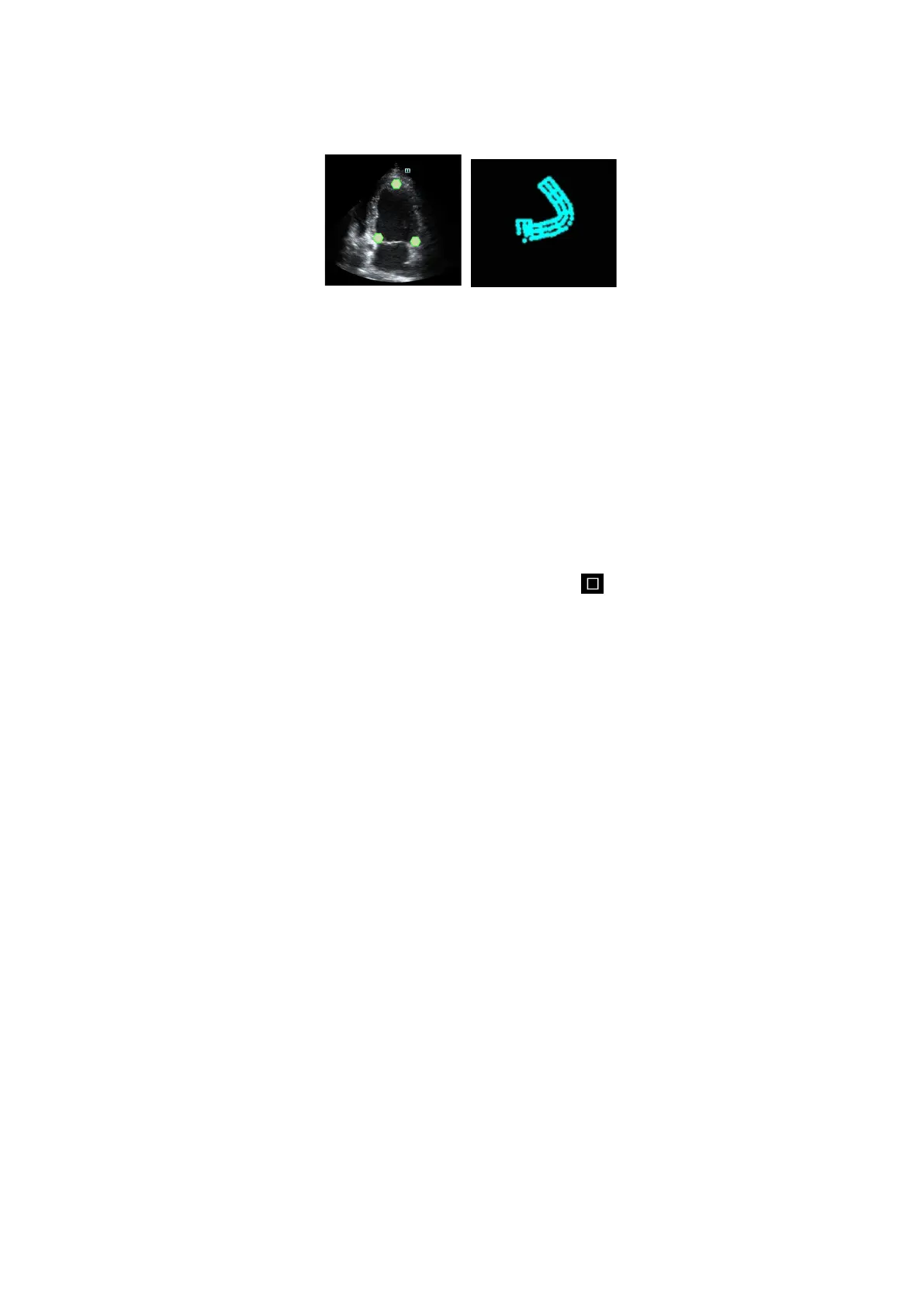Image Optimization 5-113
As shown in the following figure, after operation by pressing <Set> to place 3 points on the
image, the system generates the trace automatically.
Manual trace method
Press <Set> and roll the trackball along the boundary to add the trace points gradually,
after trace is finished, press <Set> twice to finish tracing.
NOTE: at least 6 points should be determined by you before the system generates
automated trace. Press <Set> to make the traces on the image clockwise or anticlockwise.
Short axis section (PSAX B, PSAX M, PSAX AP): only manual tracing is available.
Retracing
If current trace is not satisfactory, touch [Reload] on the touch screen to clear the trace and to start
another tracing.
During the tracing drawing, press <Clear> to clear already traced drawing.
Make fine adjustment to the trace
You can make fine adjustments to the trace after it is completed;
1. Under tracing curve adjusting status, the cursor turns into .
2. Move the cursor to the editable point, press <Set>;
3. Roll the trackball to drag the curve to desired position, press <Set> again to set the point to the
new position;
4. Repeat steps 2-3 to finish all points that need adjustment.
NOTE: under tracking status, tap [Edit] on the touch screen to enter the status.
5.16.5 Basic Operations of TTQA
Switch among the operation controls
[Start Tracking]: tap to start tracking.
[Accept & Compute]: tap to start calculation and display the curve.
[Exit]: tap to exit tissue tracking.
[Parameter]: rotate to select the curve type.
[Bull’s Eye]: touch to turn on/off bull’s eye and peak data table.
[Auto Play]: change the speed of the play.
View Selection
Before tracing, touch the corresponding keys to select for the view.
【A4C】: apical four chamber.
[A2C]: apical two chamber.
[ALAX]: apical long-axis view, also called 3-chamber view.
[PSAX B]: short axis view of base section, short axis view of mitral valve.
[PSAX M]: short axis view of base section, short axis view of papillary muscle.
[PSAX AP]: short axis view of apex.

